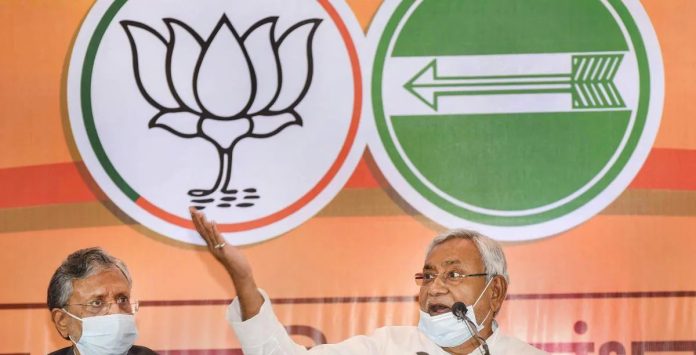- The Indian political system is governed under the ambit of the democratic form of governance that cannot be easily straitjacketed into any particular category. As you know, the democracy itself is fraught with widespread chaos but adorned with vibrancy always thriving under challenging circumstances. The constitutionally mandated pillars ensure the democratic form of governance which is based on the premise of by the people, for the people, and of the people, seamlessly administers governance keeping the welfare of the citizens in mind. As you are aware, Indian politics is largely dominated by few national parties but many regional parties. In the present times, the regional parties also hold considerable sway courtesy forging of alliances.

PC: Oishika Banerji
- Thus, two of the main national parties viz. the Grand Old Party and the Bharatiya Janata Party also have like-minded parties supporting them by forming alliances. There were earlier experiences too when a third front was formed bereft of both the national parties which proved to be unsuccessful owing to insurmountable differences cropping up. Yes, the common minimum program formed as a guiding force does help the coalition government to a certain extent. But individual one-upmanship invariably leads such fragile alliances to come into a cropper more often than not. The National Democratic Alliance led by the BJP also has few allies and the most important ally propping the group is none other than the Janata Dal-United (JD (U).
- We know the chief minister Nitish Kumar represents JD(U) in alliance with the BJP in Bihar. People closely following the political churning will also know the alliance appears strained in the last few weeks. It got further strained as Agnipath protests in Bihar highlighted the state’s massive youth unemployment. Most intriguingly, they’re also showcasing a political drama centered around CM Nitish Kumar’s dilemmas. State BJP leaders have sharpened their attacks on Nitish, blaming him for poor policing following widespread arson. Nitish’s position on caste census, rewriting history books, and population control had earlier discomfited BJP. But, still, the alliance chugs on from one controversy to another further widening the differences.

PC: Rajesh Kumar Thakur
- We know BJP and RJD with 77 and 75 legislators respectively had reduced JD(U)’s 45 MLAs to a small but crucial party in Bihar’s 243-member assembly. In-office almost continuously since 2005, anti-incumbency is predictably harshest on Nitish. Recollect how young male voters thronging RJD’s Tejashwi Yadav’s rallies in 2020 were a signal to Nitish to hand over the baton to ally BJP, which effectively targeted women voters with central schemes. It was BJP’s impressive showing that helped NDA cross the finish line, but Nitish walked away with the crown. The alliance is on the verge of breaking down is a possibility bringing curtains on yet another failure of the coalition experiment. However, expect other fringe parties to join hands to forge even more alliances.






